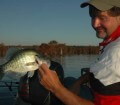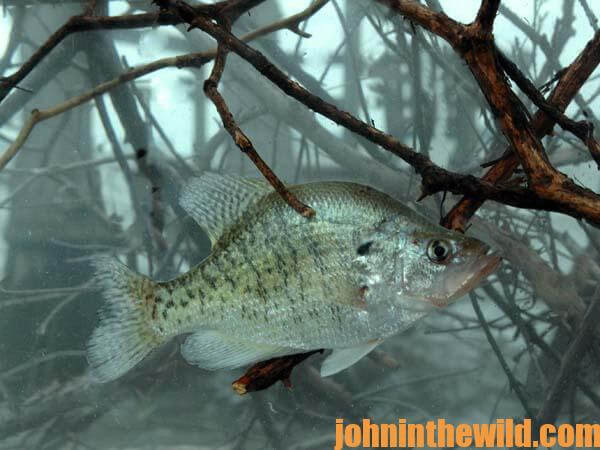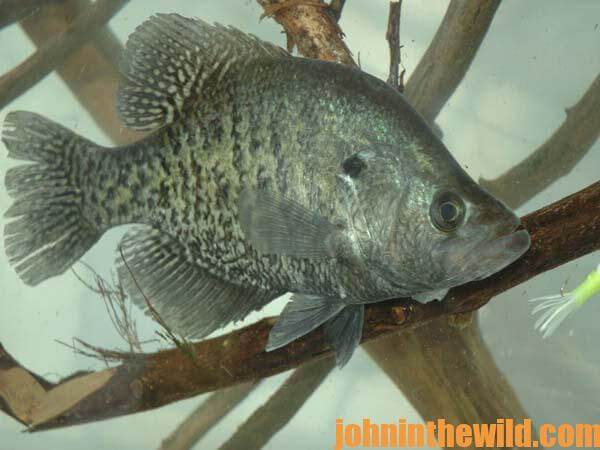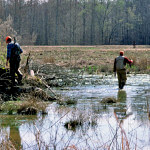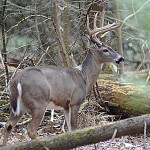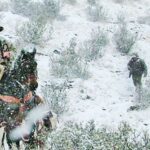John’s Note: Crappie don’t die after the spawn. But most of the time, you’ll have a difficult time finding them and seldom in shallow water. Some of the best crappie fishermen in the South have shared their secrets with us for catching crappie in weather so hot, eggs almost can fry on the sidewalk.
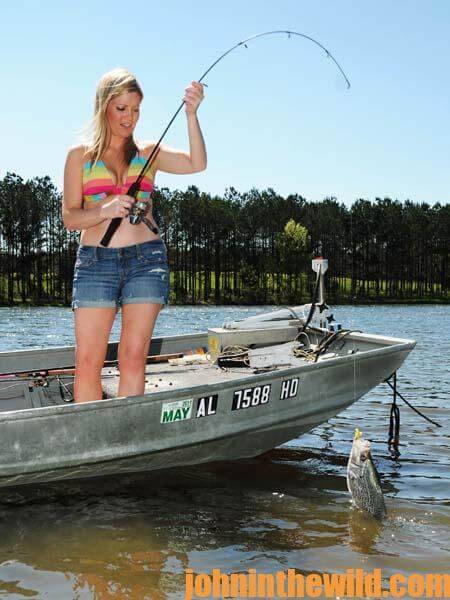 Brian Carter of Kaufman, Texas, an avid crappie fisherman and guide, fishes several lakes for crappie in hot weather. “During the summer months, my partner and I are fishing brush piles in water depths from 8- to 20-feet deep. I’ll use a 1/8-ounce chartreuse-and-white or chartreuse Jigum Jig made by Matthew Carroll. Often, we tip our jigs with minnows. We’ve found that when the water temperature reaches 90 degrees, having that minnow behind the jig drastically increases the number of strikes we get.
Brian Carter of Kaufman, Texas, an avid crappie fisherman and guide, fishes several lakes for crappie in hot weather. “During the summer months, my partner and I are fishing brush piles in water depths from 8- to 20-feet deep. I’ll use a 1/8-ounce chartreuse-and-white or chartreuse Jigum Jig made by Matthew Carroll. Often, we tip our jigs with minnows. We’ve found that when the water temperature reaches 90 degrees, having that minnow behind the jig drastically increases the number of strikes we get.
“We fish with three-different poles: an 8-foot pole, a 9-foot pole and a 10-foot pole, all made by B‘n’M Poles, depending on the water depth we’ll be fishing. This super-sensitive pole, especially when I use lightweight jigs, allows me to feel my weight through the brush, as I let the jig down into the brush. In the summer, the crappie we’re catching average between 3/4- and 1-1/2-pounds each. Until the end of July, we’ll find crappie holding on the outer edges of brush. Once the weather gets extremely-hot, we don’t catch any crappie, unless we’re fishing the very heart of the brush and putting our jigs right into the center of it.
“When the weather’s this hot, we keep our minnows alive by running an aerated bait tank on the boat and using ice to keep the water cool. We keep a thermometer in our bait tank to make sure that the water stays between 68 and 72 degrees. If we see the water in the tank getting warmer than 72 degrees, we’ll add a scoop of ice. We’ve learned that if we keep that water cool and full of oxygen, we can keep our minnows alive well into the second day, if we don’t use all of them. If you’re trying to fish shallow in that hot water, the minnows will croak. If you’re fishing down to 16 or 18 feet along the thermocline, then the minnows can go through that heat stress quickly, and they’ll be fine once they reach that cool water.”
In the summer, Carter only crappie fishes for 6 hours, starting at sunrise and fishing until about 12:00 noon, to catch 35 to 50 crappie. According to Carter, “I never do a full-day trip at this time of year. Most people think that they can handle that Texas sun and heat all day long, but by noon, they’ve discovered that they don’t want to be out in that heat any longer.”
I most enjoy catching crappie in the summer in the cool of the evening when the boat traffic and the water skiers have left the lake. You can catch crappie from 2 feet off the bottom to 2 inches under the surface in the hot-weather months. Often the crappie will hold right on the edge of a bottom break or on the vertical structure there. That’s why nighttime crappiers will find bridge pilings productive that sit on the edge of an underwater creek channel or river channel or where an underwater creek runs into the main river channel. If you hang a lantern over the side of your boat or use a floating light connected to a battery, you can bring the crappie up from near the bottom to close to the surface. As the baitfish concentrate under the light closer to the surface, the crappie will move up in the water with the baitfish.
To learn the position of the crappie under the light, I’ll drop my line all the way to the bottom and then count each turn of the reel off the bottom until I get a bite. The crappie usually will hold at one place for some time. For instance, if I start catching crappie five turns off the bottom, then when I next catch a fish, I’ll immediately bait again, drop my line to the bottom and reel five turns off the bottom. If the crappie stop biting at that depth, I’ll drop my bait all the way to the bottom and begin to slowly reel up, counting the turns I’m taking on my reel as I bring my bait up toward the surface. The longer I fish at night, usually the higher-up in the water I’ll find the crappie. Many nights just before daylight, all you’ll have to do is simply hook a minnow and drop it over the side of the boat to catch fish in 1 to 2 feet of water over a 15-foot bottom.
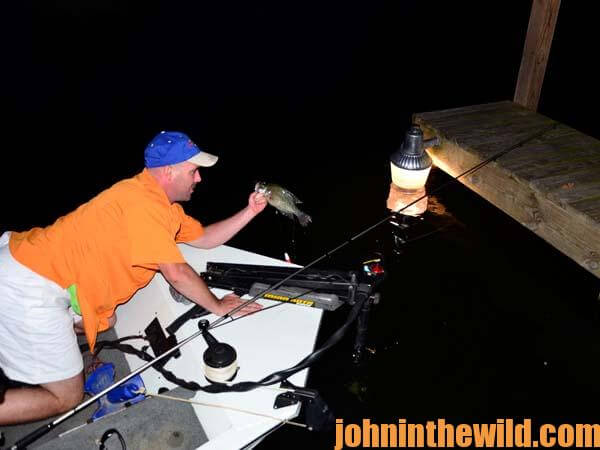 I like crappie fishing at night, especially in the summer because it doesn’t interfere with my daytime activities, the weather’s cool, and the fishing’s productive and fun. Try starlight crappie fishing, or any of the other methods our pros have recommended for the best crappie fishing ever this summer.
I like crappie fishing at night, especially in the summer because it doesn’t interfere with my daytime activities, the weather’s cool, and the fishing’s productive and fun. Try starlight crappie fishing, or any of the other methods our pros have recommended for the best crappie fishing ever this summer.
To learn much more about crappie fishing, get John E. Phillips’ Kindle eBooks and some print books, “Crappie: How to Catch Them Fall & Winter,” “Crappie: How to Catch Them Spring and Summer,” “Catch Cold Water Crappie Now” and “Catch Crappie All Year: Fishing a Single Pole, Using No Boat and Farming Crappie.” Click here to get these books. To receive for free the “Crappie Catchers’ Cookbook,” by John and Denise Phillips that offers free recipes, click here.


